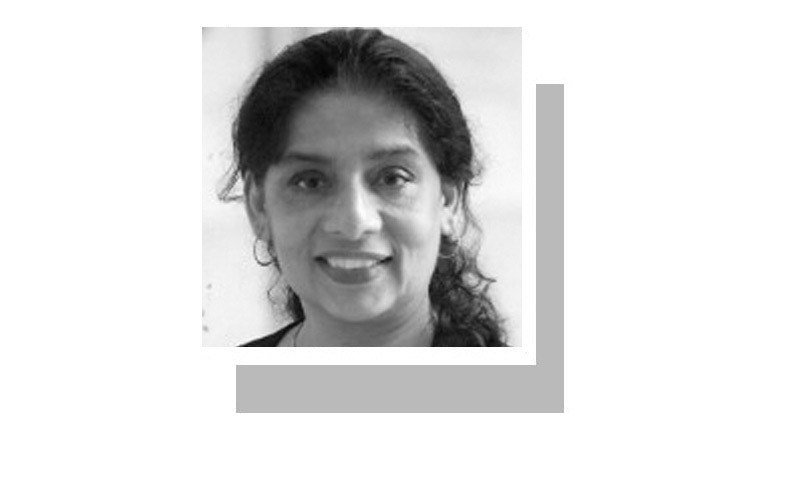
TWO recent reports about Pakistan’s health system tell of deficiencies of far-reaching significance.
The first, from Unicef, confers on Pakistan the dubious distinction of being number one in the world, climbing from number three, ahead of Afghanistan and the Central African Republic in newborn death rates. The second, a National Nutrition Survey, informs that 45 per cent of Pakistan’s children are stunted, suffering from extreme, and irreversible malnourishment that causes permanent physical and cognitive deficiencies. What would this half of future generations be capable of with its severely limited capacity to learn even if the opportunity for education is available? It would be a permanent burden on the already constrained health service delivery system.
The situation in other areas of healthcare, though not part of these reports, is equally grim. With immunisation rates no more than 50pc, measles continues to be endemic with 6,494 cases last year in Pakistan compared to 1,511 in poor Afghanistan and 513 in war-torn Syria. Maternal mortality, deaths in women due to pregnancy-related events, continues to be unacceptably high — 286 per 100,000 nationally and 786 in Balochistan. Patients dying in hospital corridors or refused treatment have forced the chief justice of Pakistan to step in the mess that should be cleaned by the health ministry. The story of spurious drugs and the problems of the Drug Regulatory Authority of Pakistan are too familiar to need recounting.
It’s remarkable that the marked decline in health outcomes has been accompanied by a sharp increase in the number of medical colleges and universities, hospitals, doctors, nurses. Advances in technology and fancy apps have facilitated diagnosis and treatment. Donors continue funding — Punjab has received a $65 million grant from DFID and the loan of an equal amount from the World Bank to reform the health ministry which now has two ministers instead of one and two secretaries instead of one.
Solutions at the margins in the absence of a robust public health system will not resolve the healthcare crisis.
What is going on? Is it that we still don’t have enough doctors for our population? It is true that the doctor to patient ratio is half that recommended by WHO. But then, why are so many young doctors unemployed? Why are so many people going to non-doctors? China’s population is five times that of Pakistan. Its infant mortality rate (deaths in children under one year) is 12, seven times less than Pakistan’s and its maternal mortality rate is 27, 10 times. Yet, China has never tried to get its doctor-to-patient ratio up to the number recommended by WHO.
“The state needs to take charge,” exhorts an editorial in this newspaper (Feb 28). But the state is firmly in charge. Plans to control communicable diseases in children and provide services to women are articulated in PC-1s.
Frenzied activity is manifested in new programmes such as the health card scheme, the formation of public companies to manage hospital waste, the engagement of expensive foreign consultants, all amidst uplifting pronouncements from government officials. The state has a panel of technical experts — eminent doctors working in its system — that are and have been advising governments for the past decade. The results speak for themselves. Why would future results be any different if the same experts continue as advisers?
There are two sets of problems. First, there is no mechanism to critically evaluate the recommendations of the experts to determine if they are in the interest of citizens or in the self-interest of the experts. No oversight is provided either by citizens or by their representatives who either do not know how to monitor or don’t sufficiently care about the situation. Ironically, suo motu notices by the court call on the same set of experts to provide answers to the problems they should be held accountable for.
Second, the health ministry lurches from one leaking hole-in-the-dyke to another, driven by donor funding, bright ideas of dignitaries, or explanations called forth by the judiciary. There is no overarching systemic vision compatible with the country’s constraints and challenges, none that has stood the test of time, regime change, or public scrutiny. The mindset that survives is that more is better — more consultants, more doctors, more beds, more ministries. The results are staring us in the face as documented in the reports mentioned here.
Solutions at the margins in the absence of a robust public health system will not resolve the healthcare crisis. Just as more flyovers and underpasses cannot stay ahead of traffic congestion, increasing the number of doctors or hospitals cannot make up for the growing burden of disease. Many intermediaries would become rich from the largesse of contracts while the citizen would continue to suffer.
This story of the past several decades is all set to continue . The jump in ranking from number three to number one provides evidence that is impossible to deny.
The writer is a public health physician and author of So Much Aid, So Little Development: Stories from Pakistan.
Published in Dawn, March 19th, 2018











































